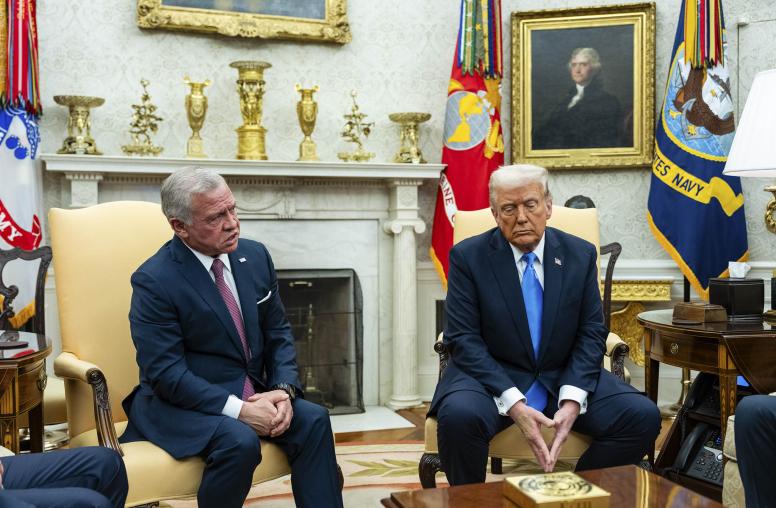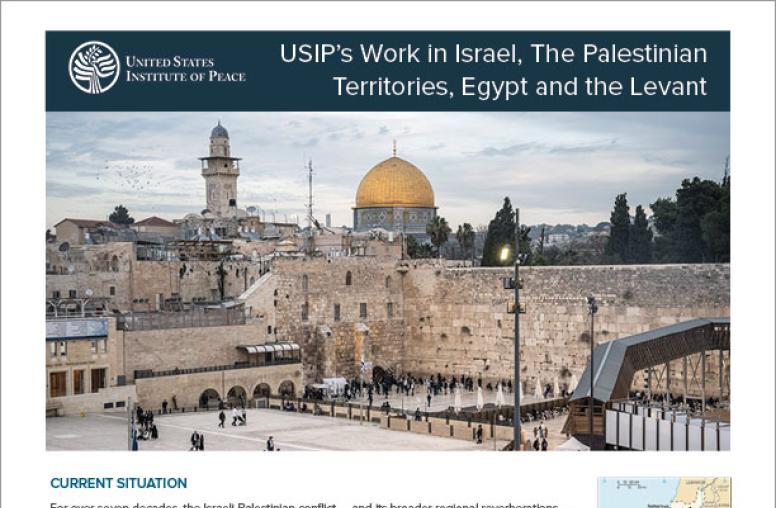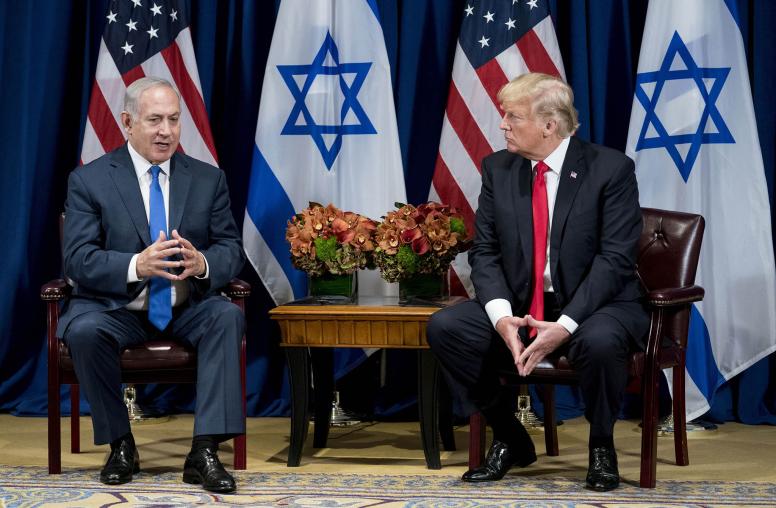Can Anything Save the Israeli-Palestinian Peace Process?
As the decades-long struggle threatens to boil over, there are four concrete steps the international community can take to help the peace along.

In Jerusalem, the view of the golden glow of Old City walls from Mount Zion at sunset presents a deceptive calm. All around, rising tensions are threatening to turn the frozen political struggle between Israelis and Palestinians into a far more intractable religious conflict. Spurred on by clashes at the Temple Mount, increasing violence in Jerusalem and the West Bank and heightened security measures, the long-running conflict has reached a new, dangerous moment.
During a recent visit, I heard from both Israelis and Palestinians that people have lost faith in their political leaders and no longer have a framework or a vision for the future. The Oslo Accords, once a beacon of hope, are now seen by the youth as a crumbling foundation for peace that — after 20 years of failure — no longer have credibility. In Jerusalem, Jews and Palestinians avoid traveling into particular neighborhoods for fear of verbal or physical attacks; cement bollards are shifted around to cordon off areas seen to be at risk; and Palestinian neighborhoods are blocked off by police checkpoints, with access closely controlled. A group of Palestinian civil society leaders I met with have spent their lives working on resolving conflicts in their communities but are now anxious about their own children’s deep-seated anger and despair.
In a conflict that has spanned decades, has generated a near cottage industry of conflict resolution and peace-building interventions, and has repeatedly defied diplomatic solutions, what can be done? A White House official told reporters on Nov. 6, in preparation for this week’s visit to the White House by Israeli Prime Minister Benjamin Netanyahu, that U.S. President Barack Obama has made a “realistic assessment” that “there will not be a comprehensive final status agreement in the remainder of his term” between Israel and the Palestinians. But the U.S. administration also said it would continue to press for concerted steps toward a two-state solution, and on Monday, President Obama reportedly followed through on that in his discussions with the prime minister.
The United States, the international community, and the parties themselves can’t afford to let the status quo take hold with only security-focused solutions and no vision or hope for a more promising future. Instead, the international community should pursue the opportunities that do exist to help lay the groundwork for an eventual Israeli-Palestinian peace.
The international community should begin by encouraging and supporting Israeli and Palestinian non-governmental organizations that are working to address their own societies’ internal divisions and fostering opportunities for divided communities to coalesce around a shared vision for a peaceful future. Increasing fragmentation within both Israeli and Palestinian societies is a symptom as well as a cause of the abandonment of any active peace process. On the Palestinian side, wavering faith in the leadership of the Palestinian Authority, its ongoing split with Hamas as it continues to rule Gaza, and the isolation of East Jerusalem hamper the development of a unified vision. On the Israeli side, communities are likewise divided across ideological, political, ethnic and religious lines.
Palestinian activists in both the West Bank and Jerusalem who lead conflict resolution initiatives — some between Israelis and Palestinians, some within Palestinian society itself — consistently emphasized to me the need for dialogue within their own society to build a common understanding for the road ahead. This observation was also echoed in Israel where I spoke with directors and participants of the initiative Talking Peace, which engages influential Israeli leaders from conflicting ideological camps for sustained dialogue about Middle East peace. Listening to secular peace activists and religious nationalists describe their joint work to overcome deep political differences underscored how a more civil discourse about peace is critical for contributing to a social and political environment that can withstand tough political decisions.
Second, it is critical to stop this conflict from morphing from a political struggle that can be resolved, into a religious clash poisoned by irreconcilable differences. The recent Temple Mount/Haram al-Sharif agreement to place cameras around the area to ensure adherence to mutually agreed standards is a useful first step in dealing with this particularly sensitive piece of real estate, and a nod to the idea that space can be peacefully shared between Jews and Muslims. This message needs to be promoted not only in the shared spaces of Jerusalem, but also via more constructive language from political and civil society leaders on both sides.
Interfaith efforts that engage religious leaders with legitimacy in their communities are a vital tool here, and should be encouraged. The Jerusalem office of Search for Common Ground, a grantee of the United States Institute of Peace, provides one such example. In partnership with the Jerusalem Intercultural Center, they are working to create a committee of Jewish, Muslim, and Christian leaders to jointly address interfaith friction on Mount Zion, a potential model for cooperation around other sites holy to different religions.
Third, practical steps are urgently needed to raise the quality of life for Palestinians in the West Bank, Gaza, and East Jerusalem. Gaza, for example, has the highest unemployment rate in the world, and 75 percent of Palestinians in East Jerusalem are now, according to May figures from The Association for Civil Rights in Israel, reportedly living below the poverty line.
Efforts at political progress, therefore, must be matched by robust measures to change economic conditions. In East Jerusalem, this includes greater access to decent jobs, housing, and education. In the West Bank, it includes loosening restrictions on access to land, water, and energy. In Gaza, it includes finally rebuilding destroyed housing and opening up trade. The Israeli government, the Palestinian Authority, the international community, and the business sector all have vital roles to play here.
Finally, a consistent theme I heard from Israelis and Palestinians was the crucial need for U.S. government leadership in helping both sides focus again on the way forward, and the dangerous risk of waiting two years for another U.S. administration to take up the challenge. While Obama has indicated in recent days that a push to new negotiations is not in the cards, his discussions with Netanyahu on the question of maintaining momentum towards a two-state solution is a move in the right direction.
In the absence of negotiations, the United States should not just articulate its interest in a two-state end game, but should exert its significant influence with both parties to prevent actions that foreclose that option and to take meaningful steps on the ground that move toward this goal. In this vein, it is imperative that the United States reinforce its long-held position that the continuing growth of settlements poses a serious obstacle to the eventual achievement of a two-state solution.
With the broader region consumed by wars in Syria, Iraq, Yemen, and Libya, as well as the massive outflow of refugees to Europe, and the viral terrorism of the Islamic State, the Israeli-Palestinian conflict has a hard time competing for attention and resources. But the failure of the United States and its allies to act will only lead to escalating cycles of desperation and violence that will surely require even greater international attention and resources later, while also eroding any potential to resolve the conflict in the longer term. Absent a political horizon to replace the current despair, the path ahead will look increasingly grim.
Reposted with permission from ForeignPolicy.com, Source: “Can Anything Save the Israeli-Palestinian Peace Process?"



